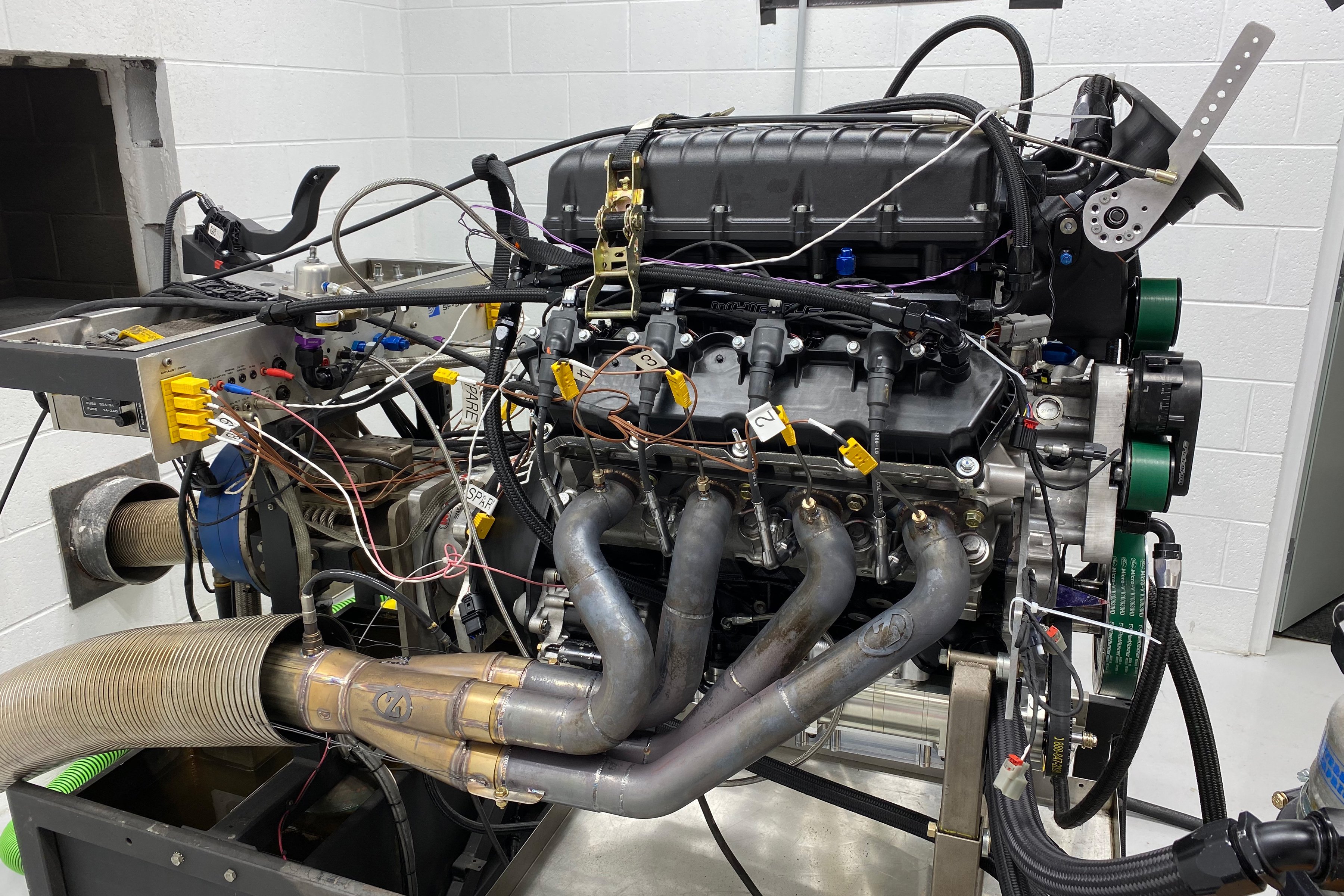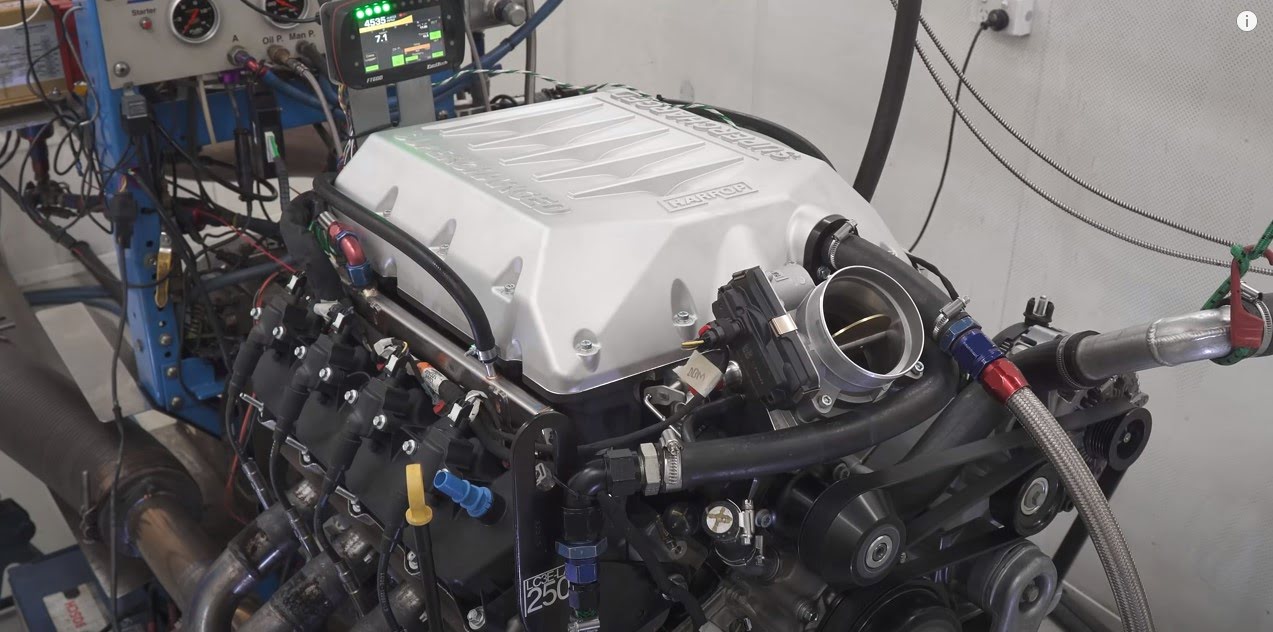Godzilla Rising: Cracking 1,400 Horsepower With Ford’s Newest V8
Really neat read, kinda long but worth it... click the link for the whole thing.

 www.enginelabs.com
www.enginelabs.com
Size is More Than Just Displacement
As for physical size, the 7.3L is 25.5 inches wide at the top of the valve covers, which is about two inches wider than a typical 351 Windsor. It’s 24 inches long (351W is typically 22.5 inches) so it will fit in just about anything.
As delivered in the 2021 F250, Ford’s new V8 delivers 430 horsepower at 5,500 rpm and 475 lb-ft of torque at 4,000 rpm. And while these are not ground-breaking numbers in terms of a racing engine, there’s much more to the story.
Godzilla’s magic lies in the design and architecture. It has a sturdy iron block with a 6-bolt main journal configuration for the forged-steel crankshaft (similar to the 4.6L DOHC and 5.0: Coyote). The heads flow 300 cfm stock and with the right porting, can flow upwards of 400 cfm (and that’s without any welding). The bellhousing pattern is the same as the Coyote and Mod Motor’s mounting pattern. In other words, Godzilla is ripe for making horsepower.
Other features from the factory include a 60mm cam bore, a chain-driven variable-volume oil pump and variable cam timing. Up top, Godzilla wears aluminum heads with big valves capable of making 600-plus horsepower with only a light clean-up on naturally aspirated combinations, and over 1,450 horsepower in fully ported trim with boost — which is impressive for stock castings.


Prior to the blower, Wolfe tested the engine naturally aspirated with this awesome billet intake (still with all the blower internals used). The combination made almost 800 horsepower without being optimized.
Before digging into the dyno results, let’s get you up to speed on the technical attributes of this new V8. The 7.3L is based around a cast-iron block featuring 4.220-inch bores spaced 4.530 inches apart. Deck height is 9.650 inches from the crankshaft centerline and the forged-steel crank is retained with 6-bolt main caps. Stock stroke is 3.976 inches and the crank has 2.660-inch main journals (which are shared with the 6.2L Ford V8) and 2.086-inch rod journals (the same as the Coyote). You’ll note there is a soft cut at the top of the deck surface for coolant flow, but this hasn’t proven to be an issue so far.
The OEM cylinder heads are aluminum and have 2.17-inch (55.13mm) intake and 1.66-inch (42.53mm) exhaust valves that sit at an 8.8-degree valve angle. The valves are also canted at 1.8 degrees. Cam lift is .539 inch (13.67mm) intake and .600 inch (15.26mm) exhaust and factory compression is 10.5:1. Stockers have cast aluminum pistons, a composite intake (designed for use in a truck) with a single 80mm throttle body, an 8-quart oil pan, and the firing order is 1-5-4-8-6-3-7-2. The weight of the 7.3L is roughly 540 pounds.
(coyote weighs 445lbs fwiw.)
Really neat read, kinda long but worth it... click the link for the whole thing.

Godzilla Rising: Cracking 1,400 Horsepower With Ford’s Newest V8
Ford's newest pushrod engine has big-block cubes in a small-block-sized package. The modern mill makes big power with a few modifications.
Size is More Than Just Displacement
As for physical size, the 7.3L is 25.5 inches wide at the top of the valve covers, which is about two inches wider than a typical 351 Windsor. It’s 24 inches long (351W is typically 22.5 inches) so it will fit in just about anything.
As delivered in the 2021 F250, Ford’s new V8 delivers 430 horsepower at 5,500 rpm and 475 lb-ft of torque at 4,000 rpm. And while these are not ground-breaking numbers in terms of a racing engine, there’s much more to the story.
Godzilla’s magic lies in the design and architecture. It has a sturdy iron block with a 6-bolt main journal configuration for the forged-steel crankshaft (similar to the 4.6L DOHC and 5.0: Coyote). The heads flow 300 cfm stock and with the right porting, can flow upwards of 400 cfm (and that’s without any welding). The bellhousing pattern is the same as the Coyote and Mod Motor’s mounting pattern. In other words, Godzilla is ripe for making horsepower.
Other features from the factory include a 60mm cam bore, a chain-driven variable-volume oil pump and variable cam timing. Up top, Godzilla wears aluminum heads with big valves capable of making 600-plus horsepower with only a light clean-up on naturally aspirated combinations, and over 1,450 horsepower in fully ported trim with boost — which is impressive for stock castings.
Prior to the blower, Wolfe tested the engine naturally aspirated with this awesome billet intake (still with all the blower internals used). The combination made almost 800 horsepower without being optimized.
Before digging into the dyno results, let’s get you up to speed on the technical attributes of this new V8. The 7.3L is based around a cast-iron block featuring 4.220-inch bores spaced 4.530 inches apart. Deck height is 9.650 inches from the crankshaft centerline and the forged-steel crank is retained with 6-bolt main caps. Stock stroke is 3.976 inches and the crank has 2.660-inch main journals (which are shared with the 6.2L Ford V8) and 2.086-inch rod journals (the same as the Coyote). You’ll note there is a soft cut at the top of the deck surface for coolant flow, but this hasn’t proven to be an issue so far.
The OEM cylinder heads are aluminum and have 2.17-inch (55.13mm) intake and 1.66-inch (42.53mm) exhaust valves that sit at an 8.8-degree valve angle. The valves are also canted at 1.8 degrees. Cam lift is .539 inch (13.67mm) intake and .600 inch (15.26mm) exhaust and factory compression is 10.5:1. Stockers have cast aluminum pistons, a composite intake (designed for use in a truck) with a single 80mm throttle body, an 8-quart oil pan, and the firing order is 1-5-4-8-6-3-7-2. The weight of the 7.3L is roughly 540 pounds.
(coyote weighs 445lbs fwiw.)



